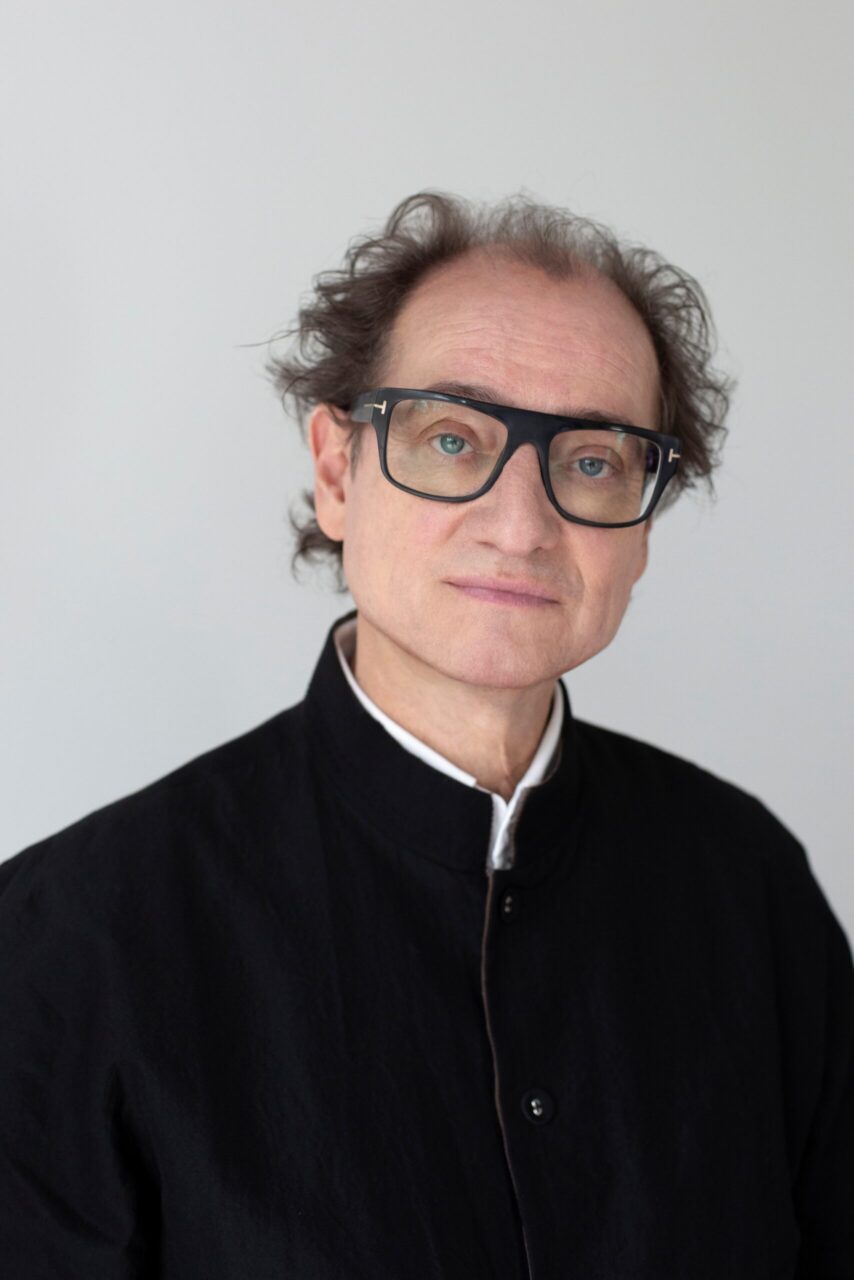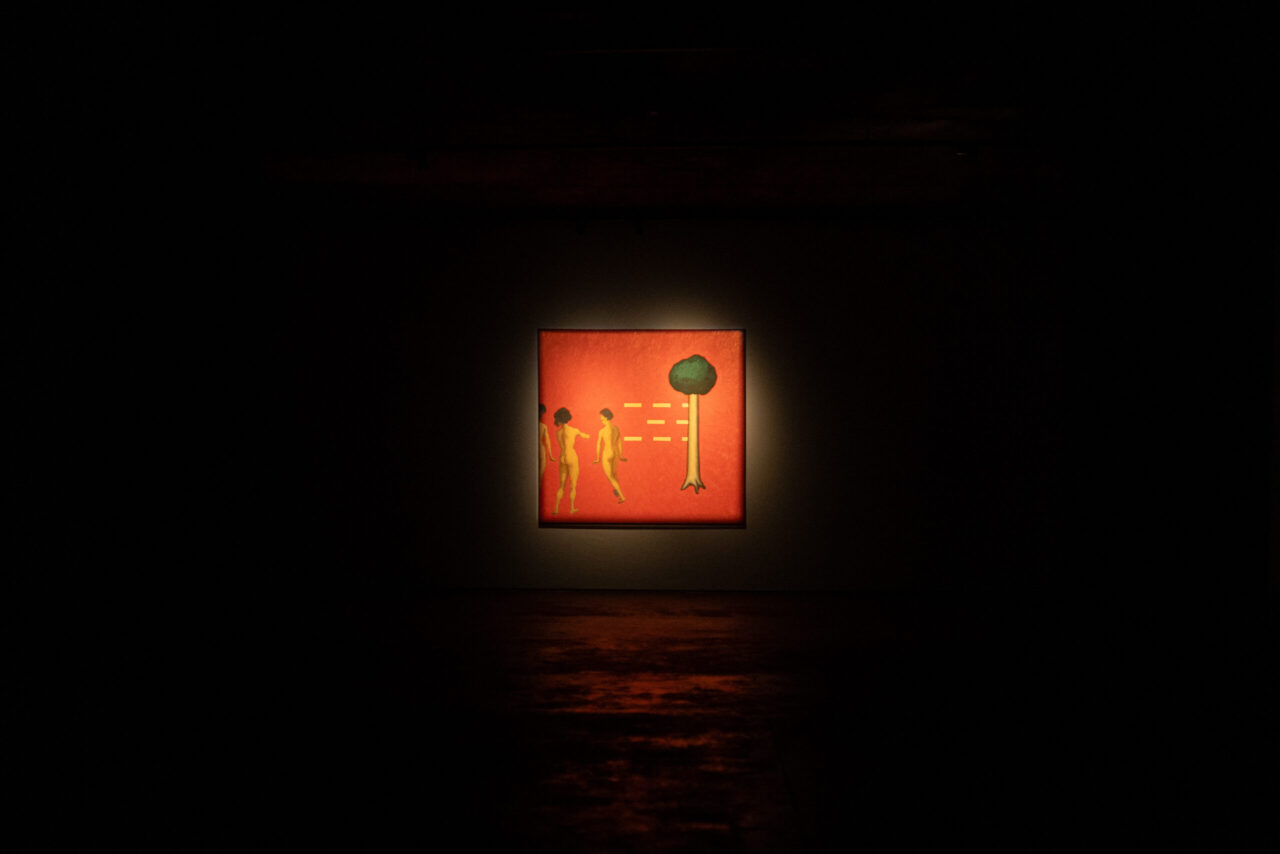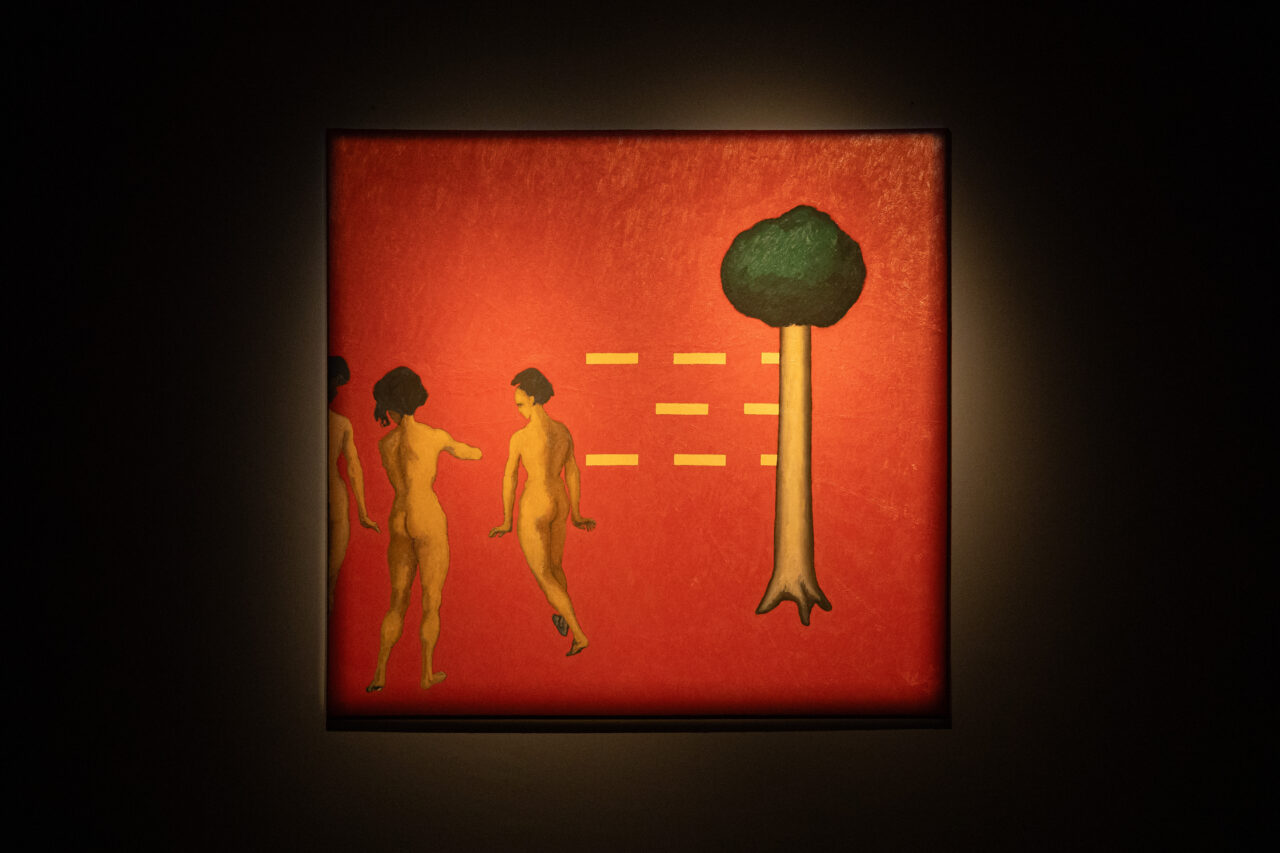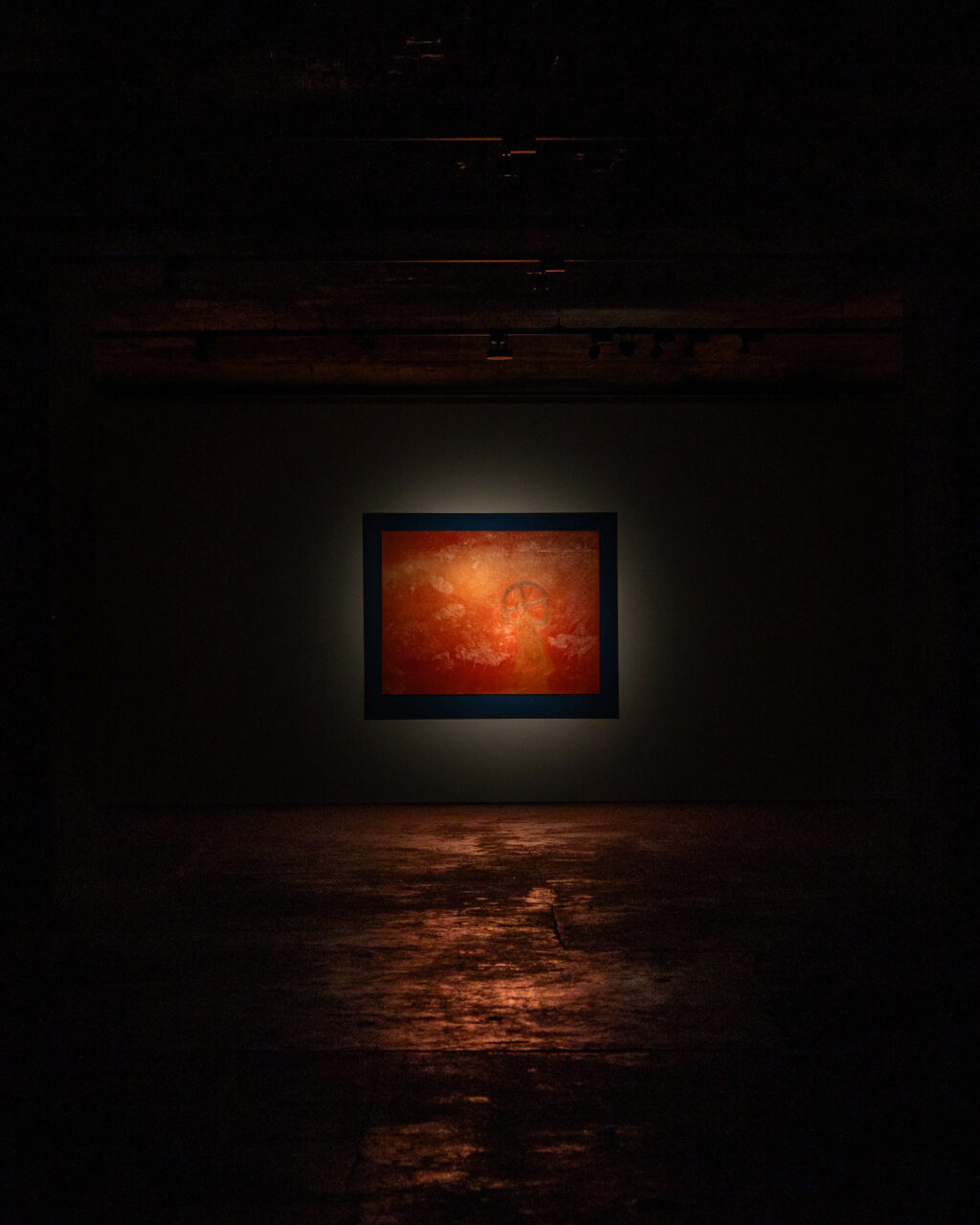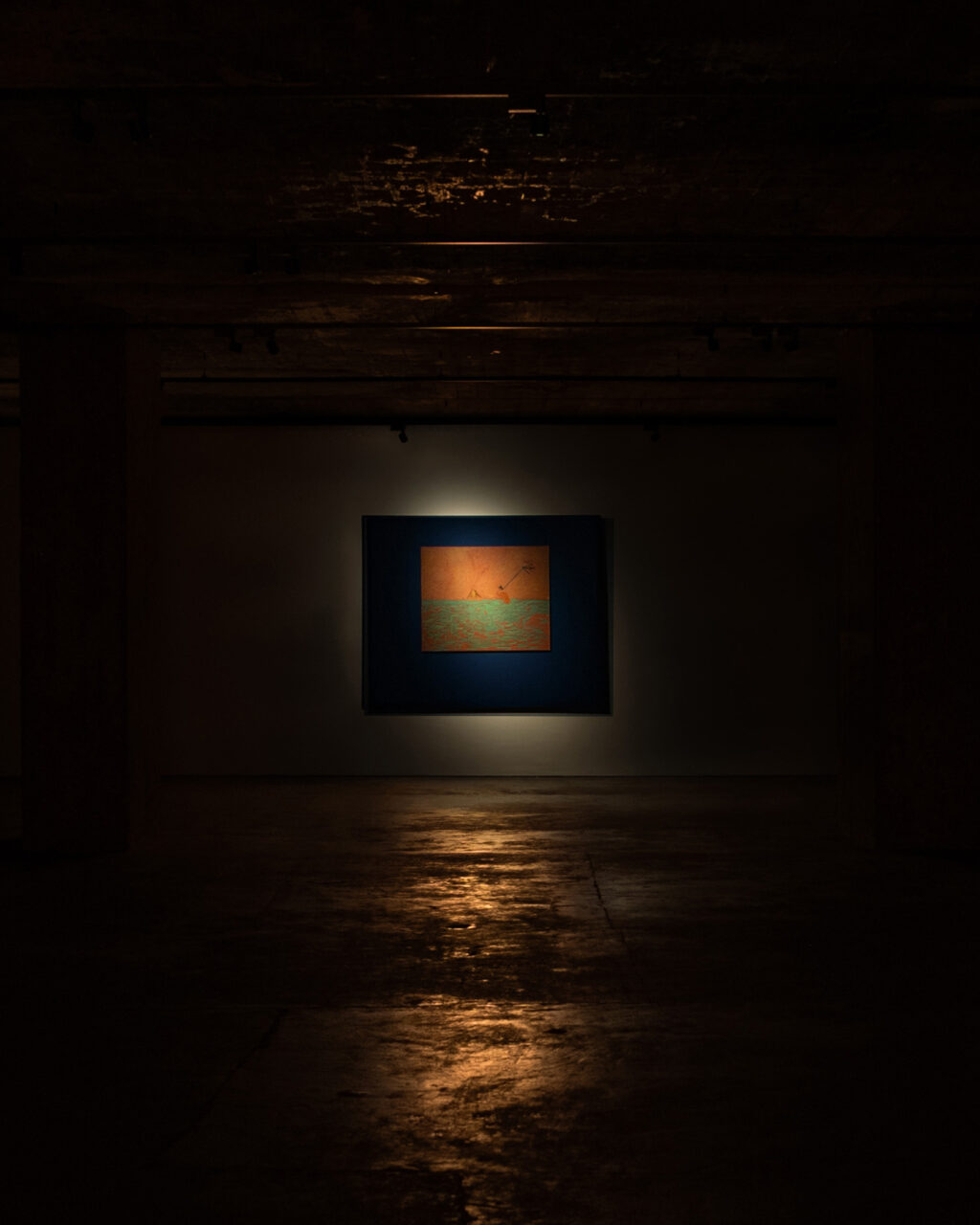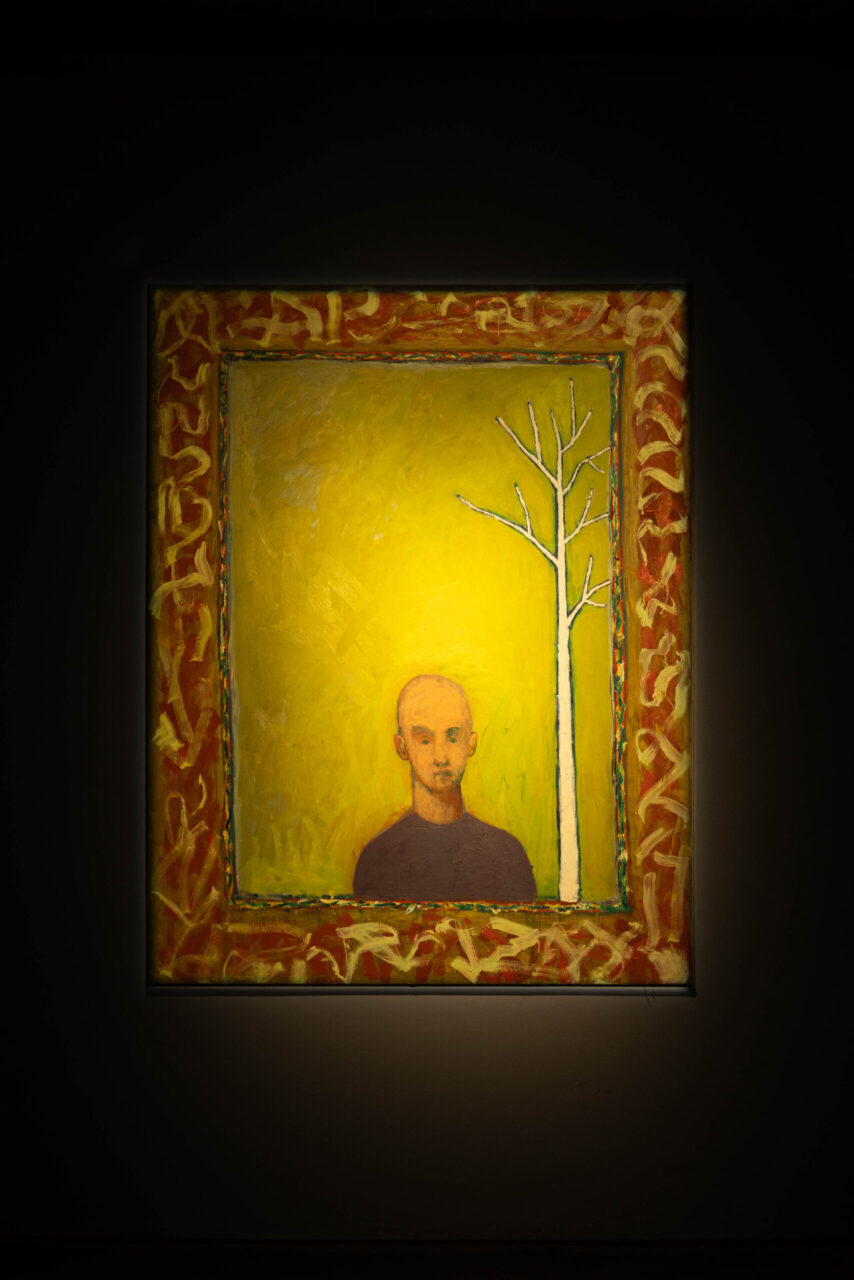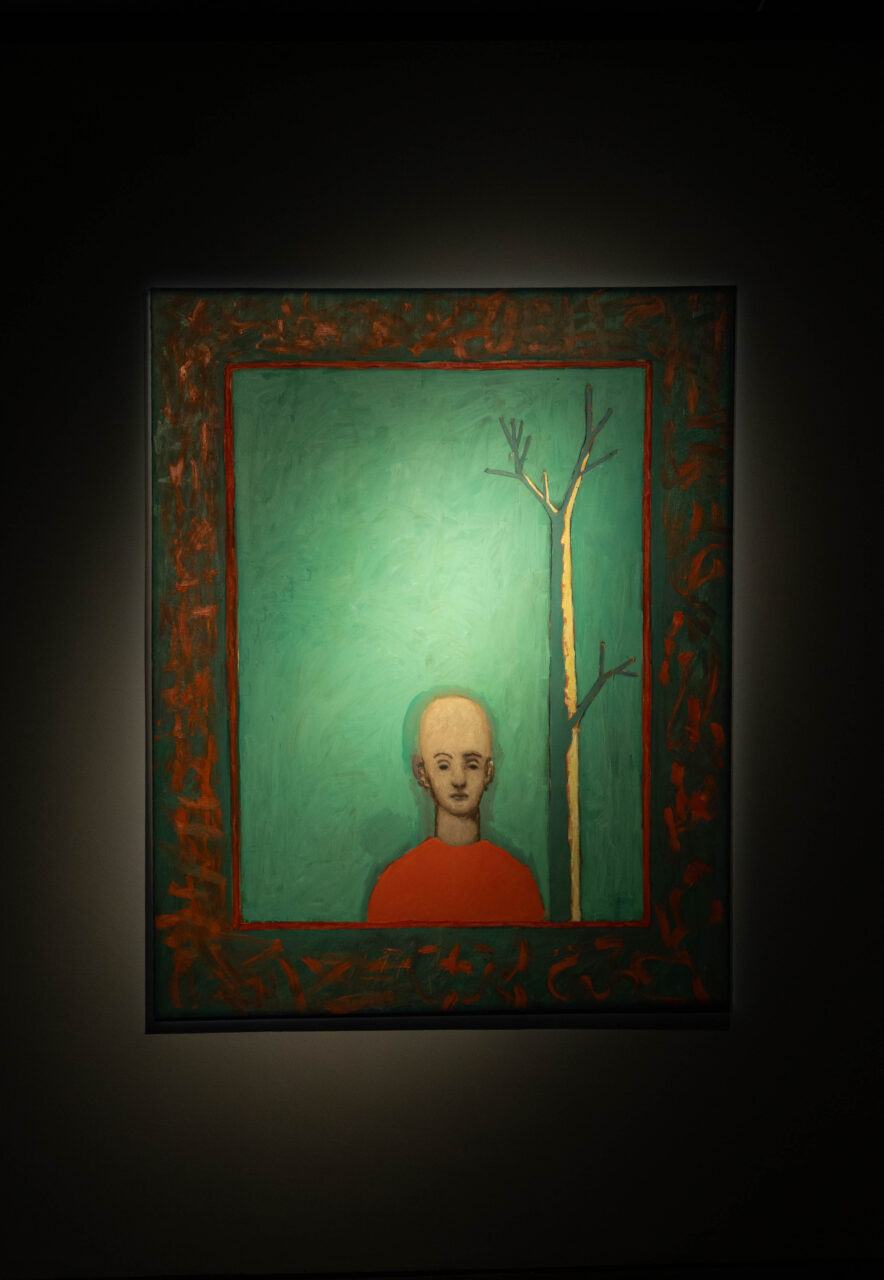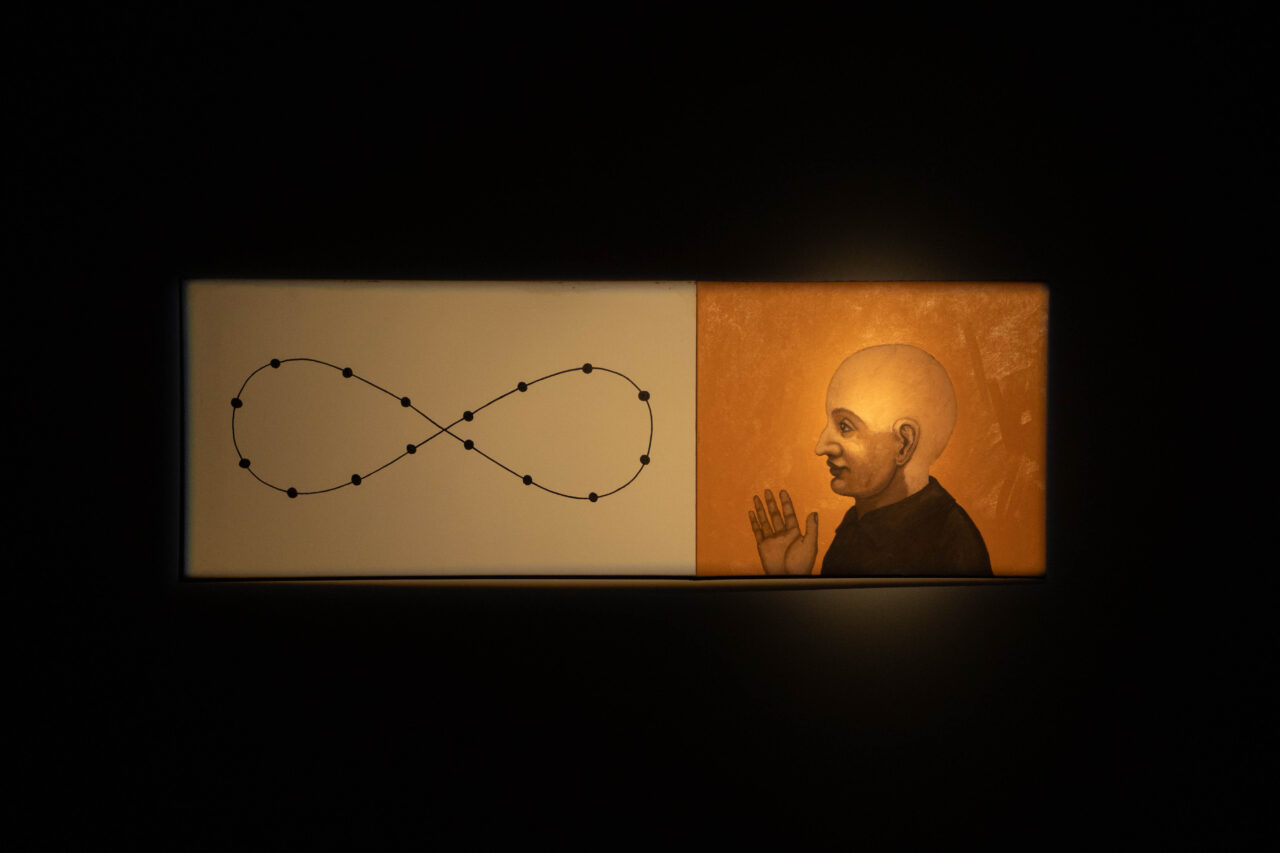In March 2025, The Feuerle Collection launched the exhibition cycle ›Alexander von Schlieffen: Painting and Astrology‹, a year-long series running until November that unfolds in four exhibitions, combining early works with recent pieces by the artist. The series is accompanied by astrology lectures given by Alexander von Schlieffen himself. The fourth and final chapter opens on 11 SEP 2025 as part of Berlin Art Week.
The Feuerle Collection: How did you meet Mr. Désiré Feuerle, and what marked your first encounter?
Alexander von Schlieffen: We were introduced by a mutual friend who believed we would have a lot in common, as neither of us has a mainstream mindset.
What does your friendship with Mr. Feuerle mean to you personally, and how has it developed over the years?
From the very beginning, we were both interested in a certain aesthetic as well as the spiritual depth of art, and that has remained unchanged to this day.
Are there any particular shared experiences or projects that have had a lasting impact on your relationship with Mr. Feuerle?
Early on, we were both fascinated by Khmer sculptures, and in the mid-1980s, we traveled to Paris together to see the originals at the Musée Guimet.
How do you view Mr. Feuerle’s vision of combining art, design, and Eastern traditions?
Désiré Feuerle’s vision was already unusual back then, and over the years, he has pursued it with great consistency, shaping it into an impressive form.
How would you describe the atmosphere that The Feuerle Collection creates for visitors?
The atmosphere in The Feuerle Collection is mysterious and, of course, mystical. This particularly highlights the magical aspects of these sculptures.
Are there specific exhibits or areas that particularly appeal to you, and why?
I love the lower level, especially because of that peculiar window looking into empty rooms that appear to be meaninglessly filled with water.
To what extent do you see The Feuerle Collection as a ›holistic cultural institution‹ that brings together different disciplines and traditions?
This collection unites ancient and contemporary art through a singular vision, creating a dialogue. Naturally, it makes sense that concerts and rituals also take place there.
The Feuerle Collection promotes meditation and sensory experiences—how do you connect these approaches with your own worldview?
The art of the past century was marked by the isolation of different aspects of life, which is certainly not healthy. Personally, I am not particularly interested in art that lacks a mystical component.
To what extent could The Feuerle Collection play a role in the astrological Air Age?
By bringing together various disciplines, a network of consciousness emerges, which would be a fitting reflection of the Air Age.
If you had to summarize Mr. Feuerle’s vision in one sentence, what would it be?
The eros of meditation combined with the eros of sensuality.
What hopes or wishes do you have for the future of The Feuerle Collection and its significance in the art world?
I would love to see the impulse of connectedness gain more substantial recognition in society. The Feuerle Collection is an excellent starting point for this.
What inspired you to delve deeply into astrological cycles, particularly the transition from the Earth Age to the Air Age?
I have been practicing astrology with great passion since 1991. Astrology is the language of different, parallel life cycles, so naturally, I engage with past, present, and future cycles. The transition from one epoch to another was an obvious subject to explore.
Can you explain the main differences between the Earth Age and the Air Age, and how they impact society?
The Earth Age focused on materialism and the causal logic of mechanical processes in life. It was dominated by economic power and scientific discoveries—not an era particularly favorable for mysticism. The Air Age, by contrast, is about reconnecting separate aspects of life to create a holistic understanding of meaning.
In your book ›The Astrological Air Age—A New Era of Connection‹, you emphasize the importance of networks. What role does the mushroom play as a symbol in this context?
The mushroom is a symbol of networking. Its mycelium connects life underground, facilitating the exchange of nutrients and defending against harmful invaders. It has been doing this for ages, which is why, in my understanding, it is the most powerful symbol of the Air Age.
How does the conjunction of Jupiter and Saturn mark the beginning of the Air Age, and what changes do you expect as a result?
A conjunction is the meeting of two celestial bodies from the Earth’s perspective.
They move at different speeds and later meet again at a new position—this is called a cycle. The networking of the world will lead us to realize that all major future challenges can only be solved through cooperation.
»The mushroom is a symbol of networking. Its mycelium connects life underground, facilitating the exchange of nutrients and defending against harmful invaders. It has been doing this for ages, which is why, in my understanding, it is the most powerful symbol of the Air Age.«
—Alexander Graf von Schlieffen
What astrological methods or techniques do you use to interpret the effects of the Air Age in personal horoscopes?
When interpreting a birth chart, I look at the original planetary configuration at birth and then examine how current or future planetary movements interact with it to form a forecast. I also use other methods, but explaining them in detail would go beyond the scope of this question.
Are there specific planetary configurations in the Air Age that you believe will be particularly significant for global developments?
One particularly relevant configuration at present is Pluto in Aquarius. This will determine whether networks are used in the service of constructive exchange or for homogeneous manipulation.
How do you see the role of astrology in the modern age, especially in the context of the Air Age?
There is hardly a more suitable language for the Air Age than astrology, as its logic is based on synchronicity and interconnected themes rather than linear causality.
What other astrological projects or research are you planning in relation to the Air Age?
Much of my work—whether in astrology, painting, or music—is a form of ongoing research. In the future, I would love to collaborate with experts from different fields.
You studied under artists such as Gerhard Richter and A.R. Penck. How did these experiences influence your artistic development?
I am a great admirer of solid craftsmanship, which, at the time of my studies, had completely fallen out of fashion. If one lacks craftsmanship, one cannot develop a language, and as a result, cannot tell stories. I always appreciated Gerhard Richter’s technical solidity, while Penck was more of a free spirit, moving between different worlds.
Your works are characterized by mystical depth and Old Master techniques. What inspires you to pursue these stylistic directions?
I love the complexity of a visual language, which does not necessarily mean making things complicated. In my younger years, I traveled through Europe, experiencing the works of the Old Masters firsthand in their humble timelessness—this was undoubtedly a profound source of inspiration.
What significance does the motif of the mushroom hold in your paintings, and how does it connect your artistic work with your astrological studies? How do you integrate your astrological insights into your artistic practice?
The mushroom came to me by chance during an image search one day, and I discovered that it always appeared as a secondary element in art history. This made it an exciting challenge to make it the central motif. It became an intoxicating process, and for seven years, I explored the world of mushrooms through painting—without initially knowing their true significance. It was primarily an intuitive decision. My astrological and artistic work do not influence each other in a causal-logical way—otherwise, it would simply be illustration. It is more like music, an exploration of interconnections translated into its own visual language.
How has your art evolved over the years, and what phases or stylistic directions have you gone through?
In school, I created Old Master-style drawings, encouraged by my wonderful teacher at the time. Then came a few years of experimentation, and in 1989, I started a series of paintings inspired by the Italian Renaissance and American Color Field painting. In 1994, I began a body of work where I only painted the light areas of a portrait, covering the entire piece with gauze fabric, creating a mystical color space where the fabric itself was no longer visible. These paintings are practically impossible to reproduce. In 2014, I started working with mushrooms, and from 2022 onward, water became the dominant subject in my paintings. At the same time, portraits returned to my work. My latest pieces are, once again, painted in oil, just as they were at the beginning of my artistic journey.
What role does music, particularly jazz, play in your creative process as a painter?
I need music to live and to experience life—it is almost like a harmless addiction. Jazz, with its improvisation, probably aligns most closely with how I perceive and experience the world.
You have participated in numerous exhibitions. Is there one that was particularly significant for you?
There are two exhibitions that I would particularly highlight: one in 1989, a large group exhibition at the Ludwig Museum in Cologne, and another in 1991 at Galerie Feuerle, where I exhibited almost exclusively the paintings of an Italian friend. There is also a beautiful catalog from that exhibition.
What message would you like to convey to viewers of your artwork, particularly in the context of the transition into the Air Age?
A.v.S.: I do not aim to convey a message per se, but rather a feeling. Many viewers of my paintings say they feel as if they are diving in or arriving at a place they didn’t know existed before. I love the complexity of visual language.
Berlin, December 2024
